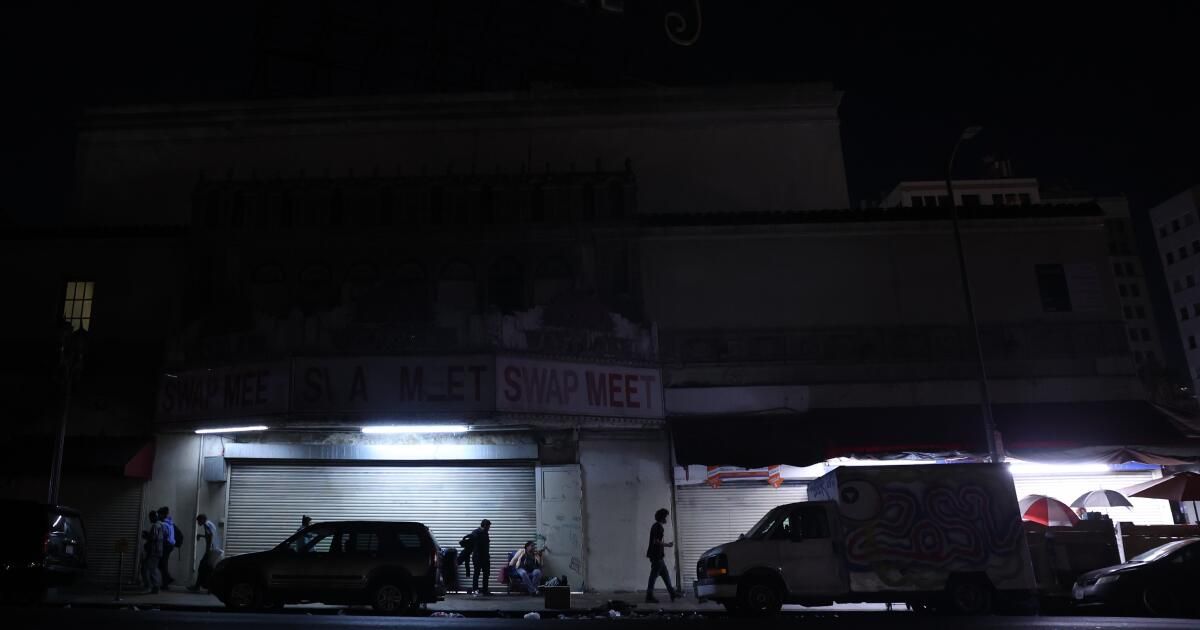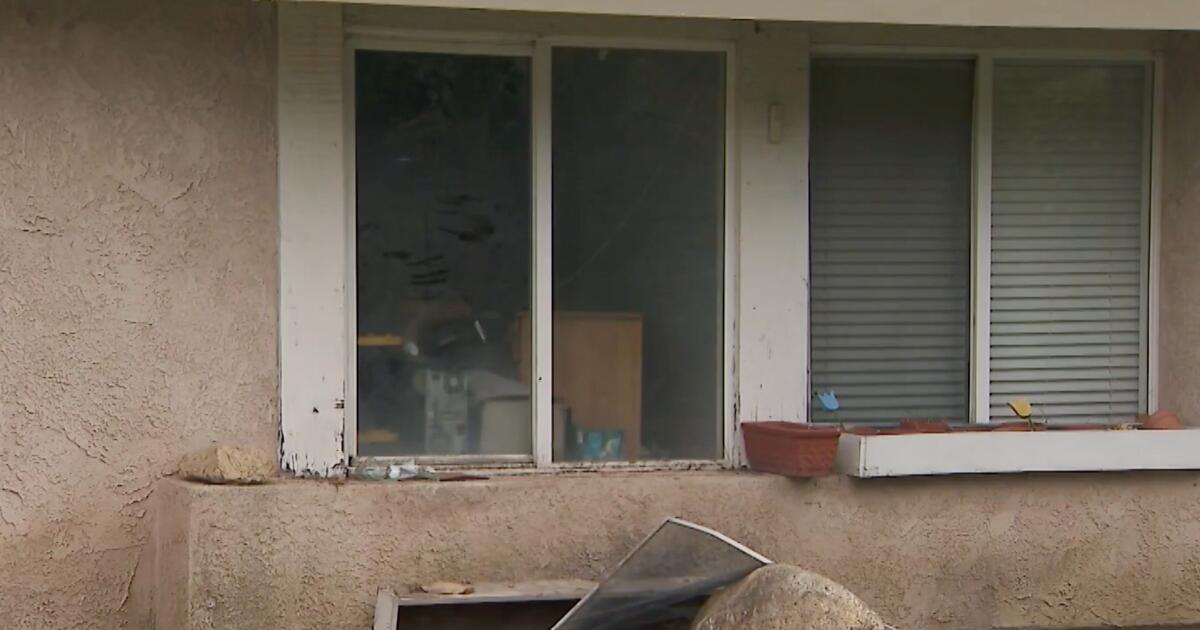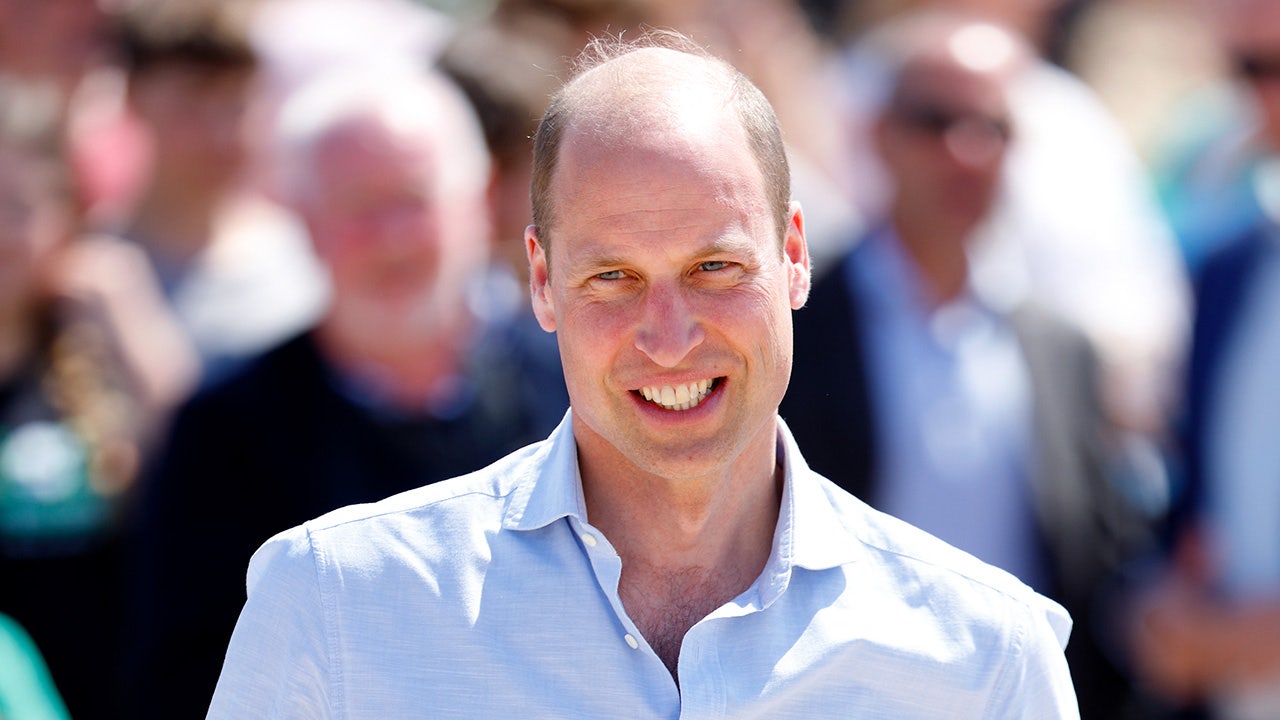Andrew Wolff stood in the darkness, looking down Alvarado Street and taking a visual inventory of the broken streetlights on the eastern edge of MacArthur Park.
“There are no lights until that corner,” Wolff said, pointing to Wilshire Boulevard and beyond. “There are no lights on either side, until From Langer.”
It's no small consideration, given the long history of criminal activity in the area and the number of drugged people entering and leaving the park, an epicenter of the raging fentanyl epidemic.
“I was driving yesterday and I almost hit someone. You can’t see, it’s so dark,” Wolff said, adding that the lights have been off for at least a year. “Everyone we know has been informed and we haven’t received any response.”
More time has passed, said Eduardo Aguirre.
“It’s been maybe two or three years,” he told me. And unlike streetlights across the city, which have had their copper wiring and other materials stripped away by thieves, Aguirre said these only needed basic maintenance, but no one expected a repair in the near future.
California is about to be hit by a wave of aging, and Steve Lopez is taking advantage of it. His column focuses on the advantages and disadvantages of advancing age, and how some people are challenging the stigma associated with older adults.
Wolff, Aguirre and Elaine Alaniz, all members of the area's Neighborhood Councils, were giving me a tour of their territory, where lighting is just one of many problems. They said local merchants were suffering from robberies and threats from gangs, that a new playground in the park had been damaged by fire and that drug dealing was blatantly visible day and night.
“I’ve worked with a lot of kids and I don’t think it’s right for them to see this,” Alaniz said as we walked through a group of people who appeared to be using drugs or recovering from their latest fix.
We came across a small group of people gathered at the edge of the park and I pulled out my phone to show them a photo. It was a photo of a young woman whose mother and grandmother were searching for her.
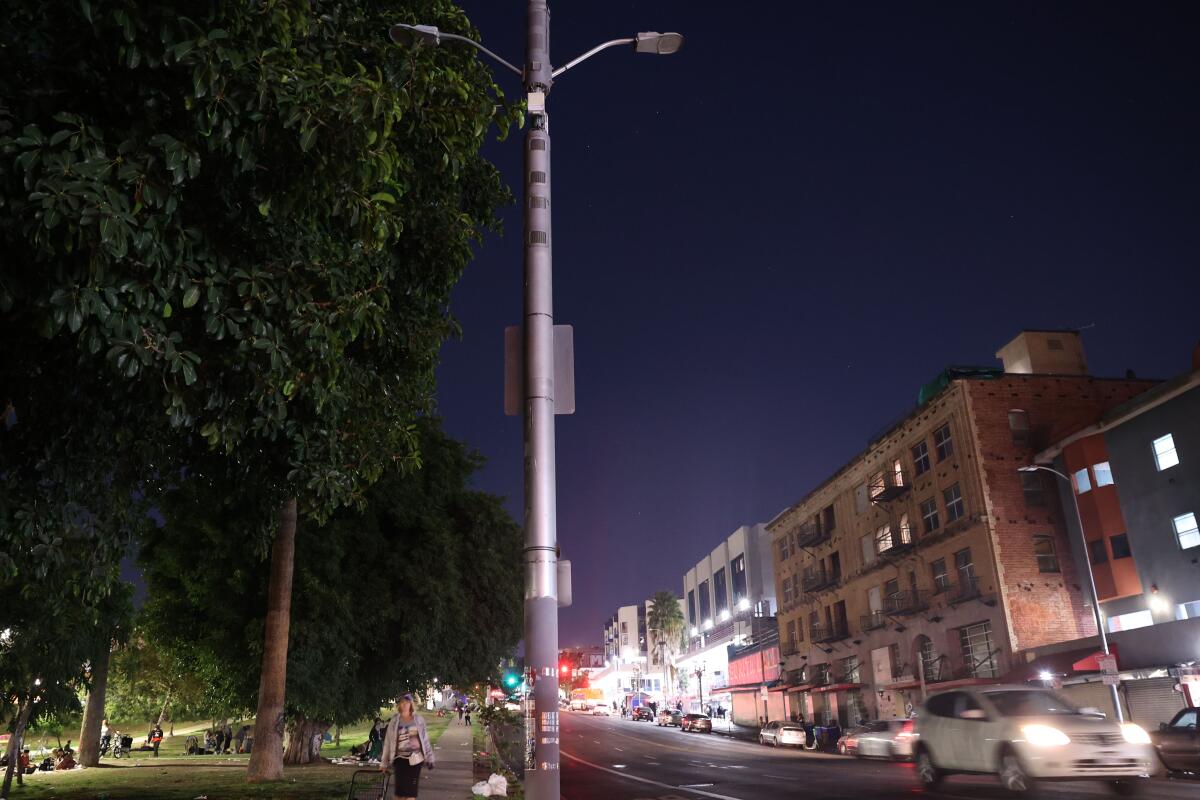
Many streetlights in and around MacArthur Park are not working. “We have told everyone we know and have not received a response,” said one resident.
(Michael Blackshire/Los Angeles Times)
“This is the place to look, if she's into drugs and stuff,” said a middle-aged man.
“I feel like I've met her,” said her partner, Serena Brown, who couldn't remember exactly where that might have been.
Brown, 46, said fentanyl is especially dangerous if you've been sober for a while, as she had been during a three-month prison sentence. Your tolerance level drops, and a strong dose can kill you.
“I only overdosed once, when I got out of jail,” Brown said. “Luckily, I was near people who gave me Narcan and saved my life.”
People will rush to the scene if someone has overdosed, he said, and not just to help. They think it must be something powerful, Brown said, and they want to get something.
I asked him if he could change things, if he could. enter a programShe said she was practically broke, looking for housing and ready for a change.
“I would go to rehab if there was independent housing at the end of the day, and I’m not saying I want it for free,” Brown said. “I would definitely go to rehab, 100 percent.”
But it's hard to escape the urge to use, she said, especially with fentanyl, which is highly addictive. Legal action has been taken to get local officials to increase the county's supply of mental health and substance abuse treatment beds.
“I think fentanyl is a horrible, evil drug,” Brown said.
Wolff and I asked him if he had lost any friends to overdoses.
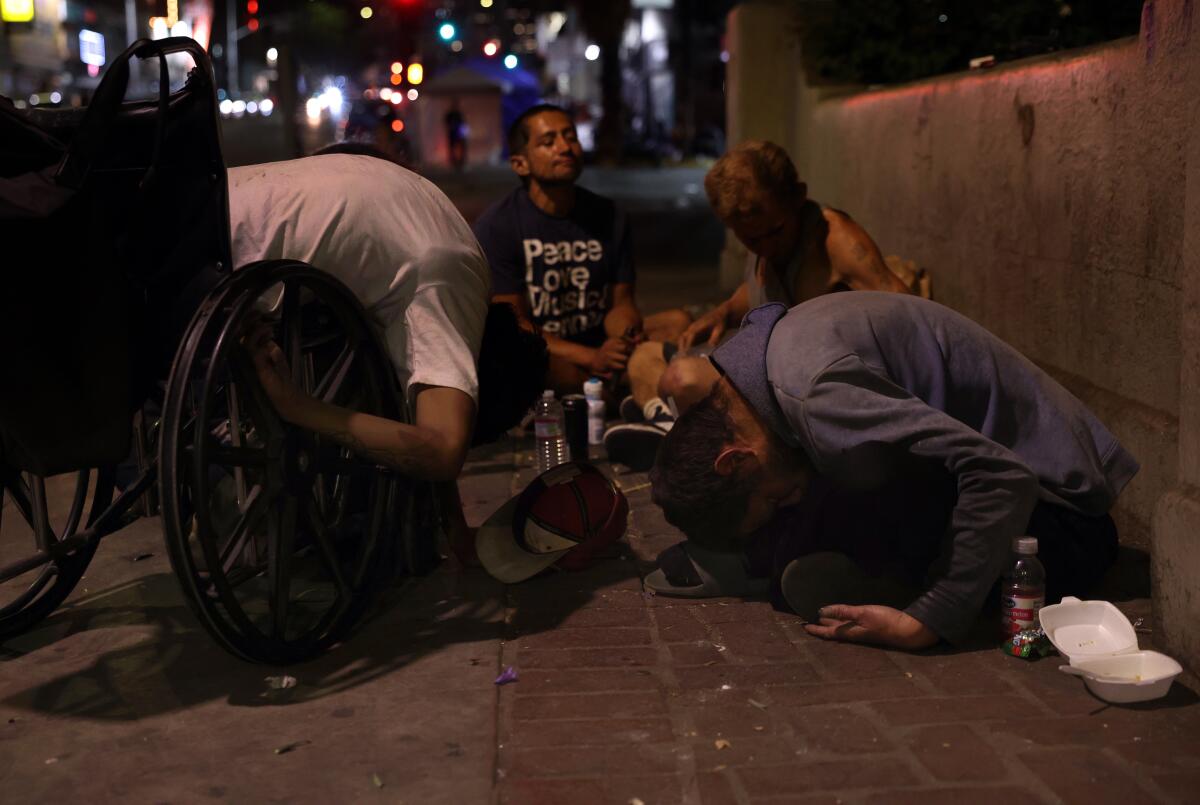
People gather at the edge of MacArthur Park.
(Michael Blackshire/Los Angeles Times)
“Yes,” Brown said. “I’ve lost 12 people.”
Eunisses HernandezThe Los Angeles City Council representative for the area for nearly two years, said he would like to see city leaders shift funding from law enforcement to community services, calling it a “care first” approach.
“This is not health care,” Alaniz said as we took in the devastating toll of addiction and various untreated physical illnesses. People were hunched and hollow, like characters in a horror movie.
Aurora Corona, another neighborhood council member who lives near the park, told me she likes the idea of putting care first. But the situation is “out of control,” and that makes her angry because families living in small apartments with no outdoor space have been driven away from their park. Corona said she wants to see more enforcement and a restoration of order along with social services.
Hernandez told me she, too, feels frustrated and sometimes “feels like screaming at the top of my lungs.” While she sees a role for police, she said, she believes a larger percentage of the city’s money should go toward lighting, housing, sanitation and crime prevention.
Hernandez said he wants to expand his medical outreach team, which is run in collaboration with USC, and plans to launch a mobile overdose prevention unit. He said he is strategizing with Mayor Karen Bass and using federal grants, philanthropic donations and other funding sources to make investments in the community, including a homeless services center and a homeless health center. park redesign.
Could those things make a difference? Sure, but in the working-class immigrant community of MacArthur Park, the problems exist in large part because promises have not been kept.
When I wrote about Norm Langer saying he might retire and close his restaurant in Westlake because of festering problems in the neighborhood, Bass went to listen to him. over a pastrami sandwich. He later told me, “The bottom line is we have to do whatever it takes and we have to respond urgently.”
When it takes a year or more to fix the streetlights on the main boulevards in the heart of the city, not far from City Hall, the last word that comes to mind is “urgency,” and cynicism naturally follows. The entire row of streetlights on either side of Wilshire Boulevard, which runs through the heart of the park, is dark, though the lights inside the park are working. Wolff has even drawn up a map of the breakdowns.
Instead of working on redesigning the park, a project that would cost $2.5 million, how about fixing the lights?
Hernandez knows the lights are off.
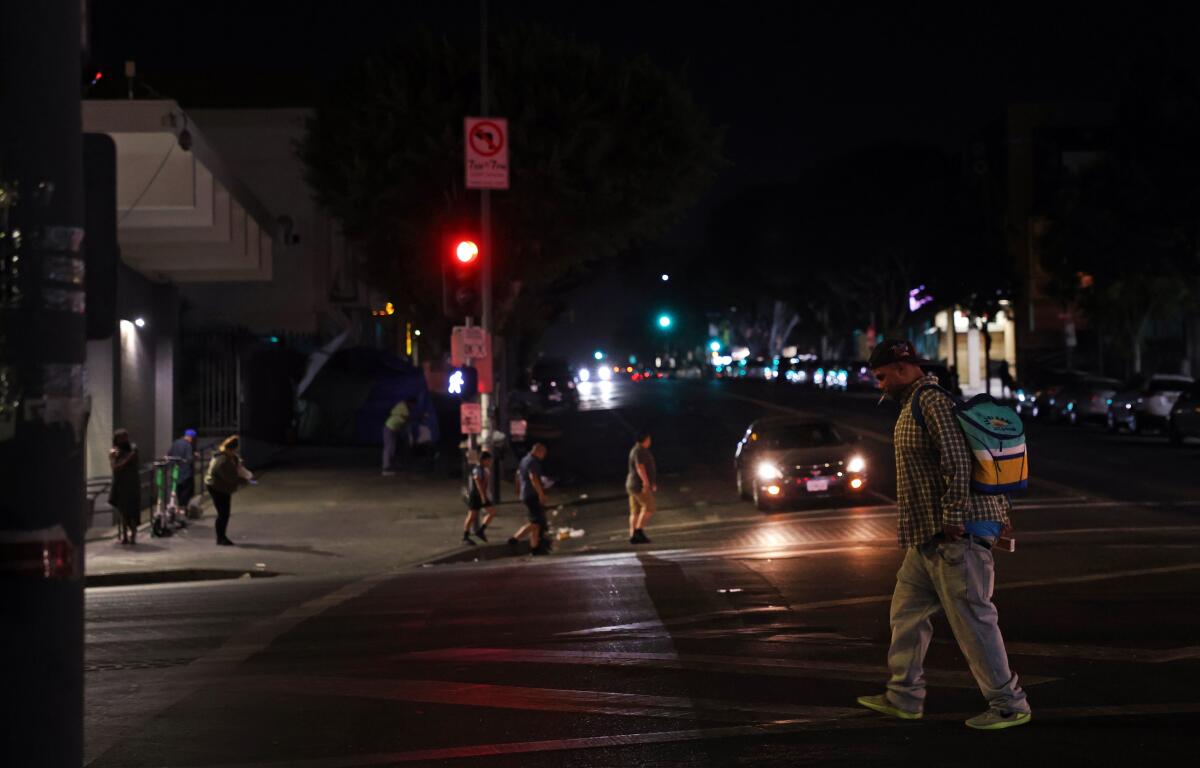
The entire row of streetlights on either side of Wilshire Boulevard, which runs through the heart of the park, are off, although the lights inside the park are working.
(Michael Blackshire/Los Angeles Times)
Bass knows the lights are off.
Someone, anyone, needs to get trucks and equipment to MacArthur Park.
Not in six months, not in a year, not in three.
Immediately.
Fix the lights, for God's sake.
Our last stop on the neighborhood tour was at the $1.3 million playground which opened earlier this year in the southwest corner of the park.
“This park is located right in the middle of one of the most densely populated neighborhoods in the entire city and county of Los Angeles,” Hernandez said at the groundbreaking ceremony in February. “The vast majority of our residents in this neighborhood live in apartments that do not have access to green space in the form of a front or backyard.”
Wolff said the entire community was grateful, but he and his wife had made regular early-morning visits to the playground to remove syringes before children arrived to play on the swings, slides and climbing frames.
And now there is a much bigger problem to deal with. A fire, which is still being investigated, damaged part of the structure and melted a portion of the slide. The play area was fenced off with yellow “Caution” tape around the perimeter.
Wolff looked disgusted and wondered aloud why the park couldn’t be declared a drug- and gang-free zone. He wore a T-shirt that read, “Liberate the MacArthur Park Neighborhood.”
A young couple walked by pushing their two-year-old son in a stroller.
“We brought him here almost every day,” the mother told me, adding that she did not know where her son would play now.
Victor Williams, a local resident who was visiting the park with friends, said he couldn't comprehend all the destructive behavior, land destruction and large-scale drug-dealing activity. He referred to those responsible for the fires as “savages.”
“Nobody talks about it,” Williams said, disgusted by the silent acceptance of civic dysfunction.
But then he looked east, across a sparkling lake, toward the ornate skyline of downtown.
“This park is so beautiful,” she said.
It has been and it could be. And for a moment, on a warm September night, with its patches of shadows, it was.

